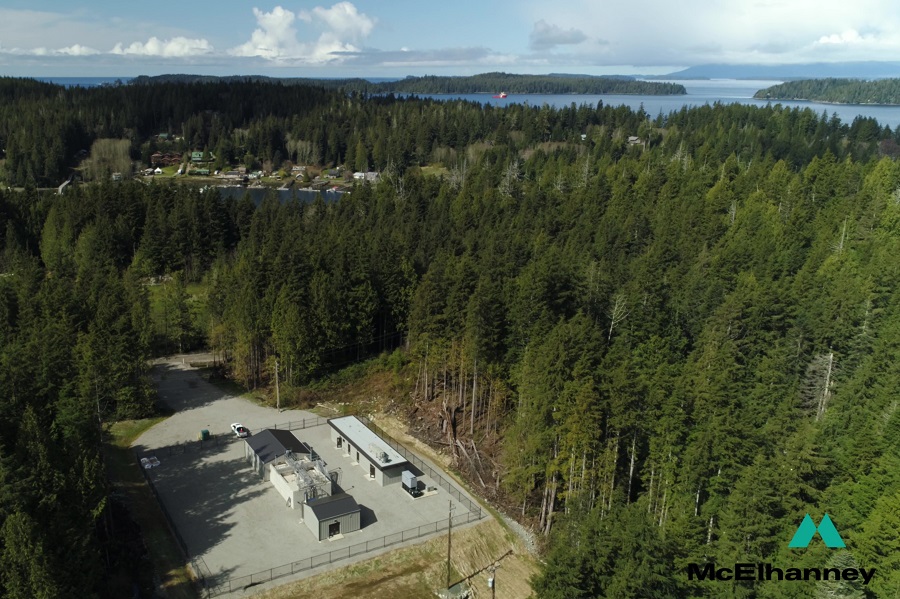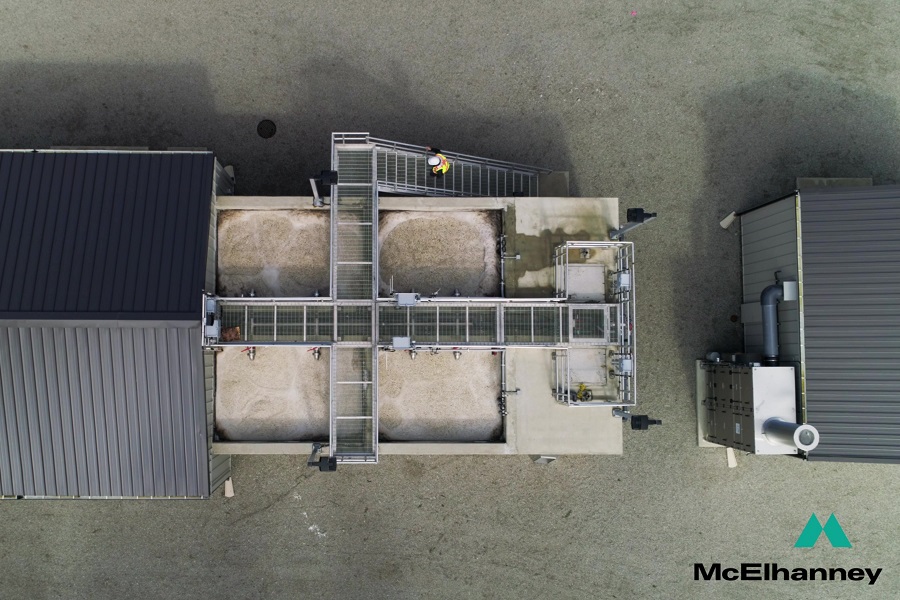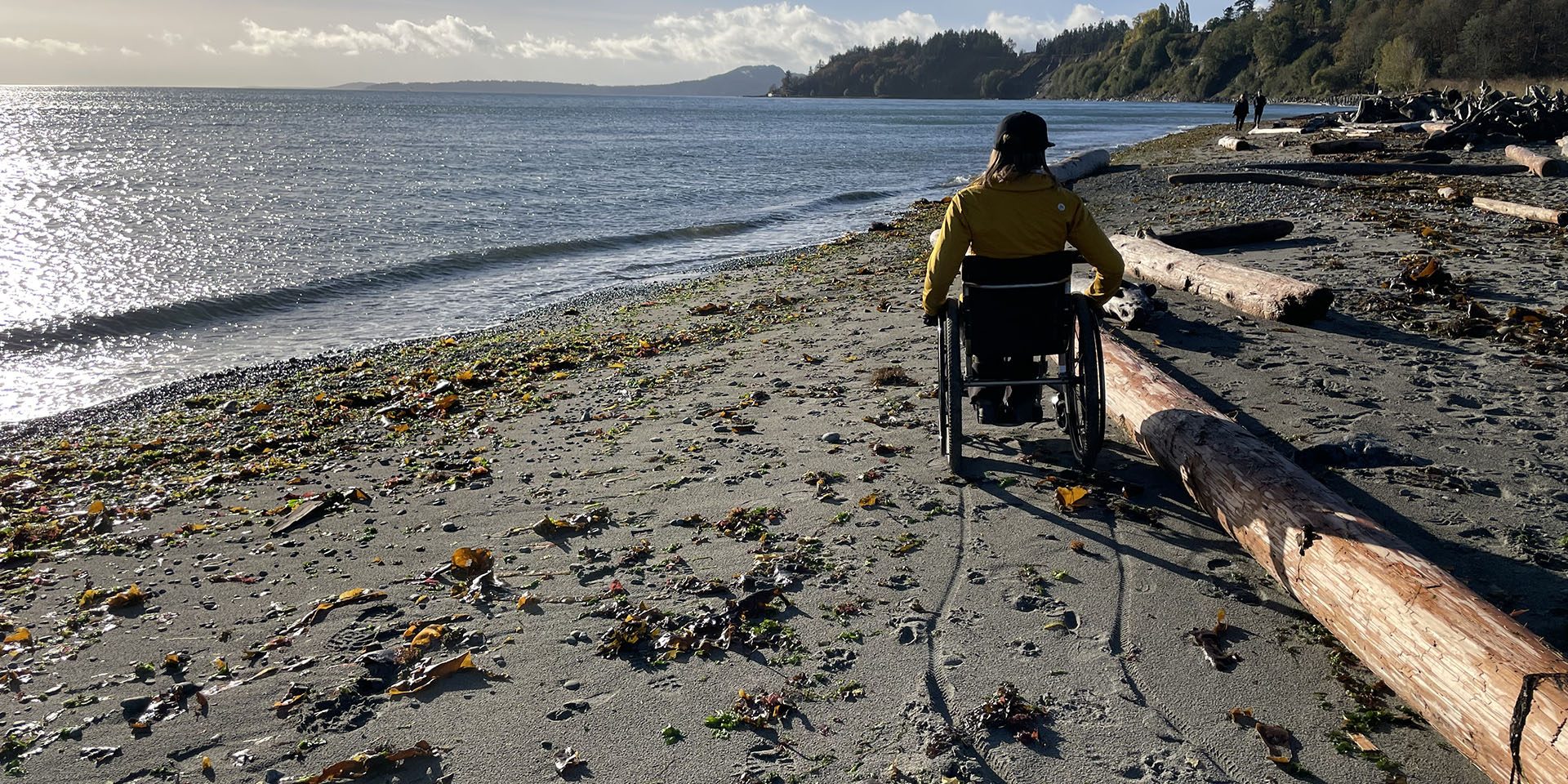Anacla Community Wastewater Treatment System
2015-2022 | Anacla (Bamfield), British Columbia
The existing community of Anacla is located in the estuary of the Pacheena River within the tsunami impact zone. To accommodate future growth without further development in the impact zone, the Huu-ay-aht First Nations (HFN) planned to develop a new subdivision (known as “Upper Anacla” to differentiate it from the existing Anacla community) located north of the existing community on higher lands.
To support the development of a new subdivision on higher lands, HFN required new community infrastructure including a wastewater treatment plant (WWTP) and disposal system. The Huu-ay-aht First Nations began the process by commissioning a series of studies to address selection of an appropriate sewage treatment and disposal system based on site conditions and available funding.
At the same time, an existing wastewater treatment facility serving Bamfield Marine Science Centre (BMSC) was at the end of its operational life. BMSC was aware of HFN’s efforts and expressed interest in partnering with HFN to construct a community wastewater management system. Ultimately, the preferred location of this new wastewater treatment facility was on the land owned by the BMSC.
The following components were required to provide service wastewater collection, treatment, and disposal for the Upper Anacla subdivision:
- Gravity sanitary sewer collection within Upper Anacla
- Lift station at Anacla
- Forcemain from Anacla to BMSC
- Dosing chamber (due to topography)
- Wastewater treatment plant at BMSC
- Effluent discharge to ocean outfall
- Ocean outfall into Trevor Channel
Prior to design and construction of the wastewater treatment plant, three main treatment processes were reviewed:
- A suspended growth process in an Extended Aeration Activated Sludge (EAAS) bioreactor coupled with Upflow Sludge Blanket Filtration (USBF);
- An attached growth process on a Rotating Biological Contactor (RBC); and
- An attached growth process in a Moving Bed Biological Reactor (MBBR).
These three main treatment processes were all options that could provide the “engine” in the facility. In each case, the main treatment process is augmented by upstream pump(s), screen(s), and equalization tank(s), and by downstream clarifier(s), sludge stabilization tank(s) and disinfection equipment.
Our team attended a site review with HFN staff in November 2016. These representatives toured southern Vancouver Island to review and compare a working example of all three treatment processes. All representatives agreed that the MBBR process provided the best option based on simplicity, cleanliness, and the low cost of expansion.
Today, the wastewater treatment facility treats influent wastewater to meet and exceed the secondary effluent standards through preliminary and secondary biological treatment, and effluent disinfection. Preliminary treatment is completed through fine screening followed by flow equalization. Secondary wastewater treatment is achieved in a fixed-film, Moving Bed Biological Reactor (MBBR) process. Solids / liquid separation is accomplished in the secondary clarifiers followed by the separated solids transfer to sludge holding tanks (aerobic digesters). Clarified effluent is transferred to UV disinfection prior to gravity discharge to the marine outfall. Foul odour from the screen room, equalization tank, and sludge holding tanks is treated by an odour control unit based on the photoionization process.
McElhanney provided:
- Feasibility studies and site assessments
- Preliminary design
- Detailed design
- Construction supervision
- Project permitting and closeout



